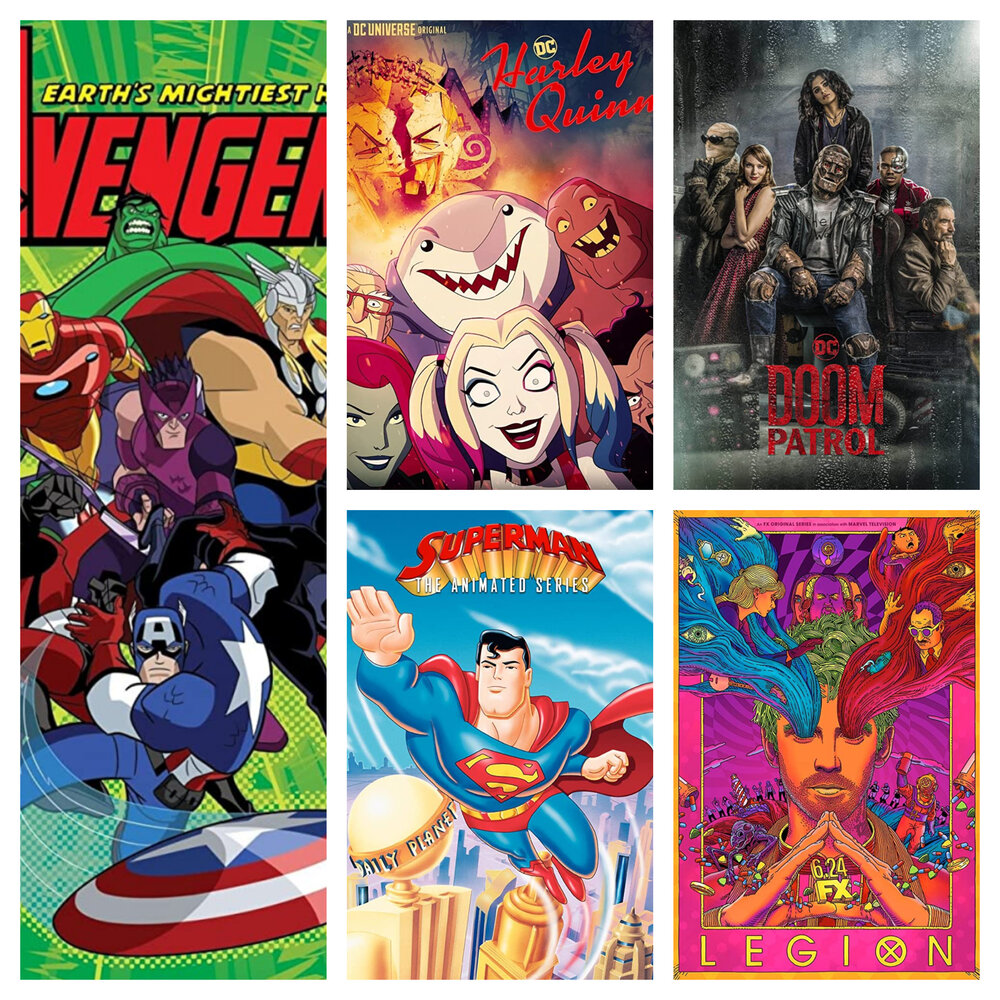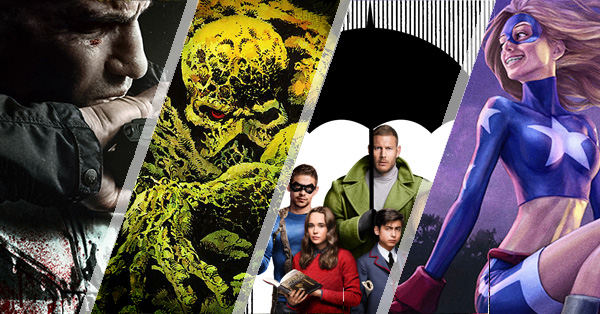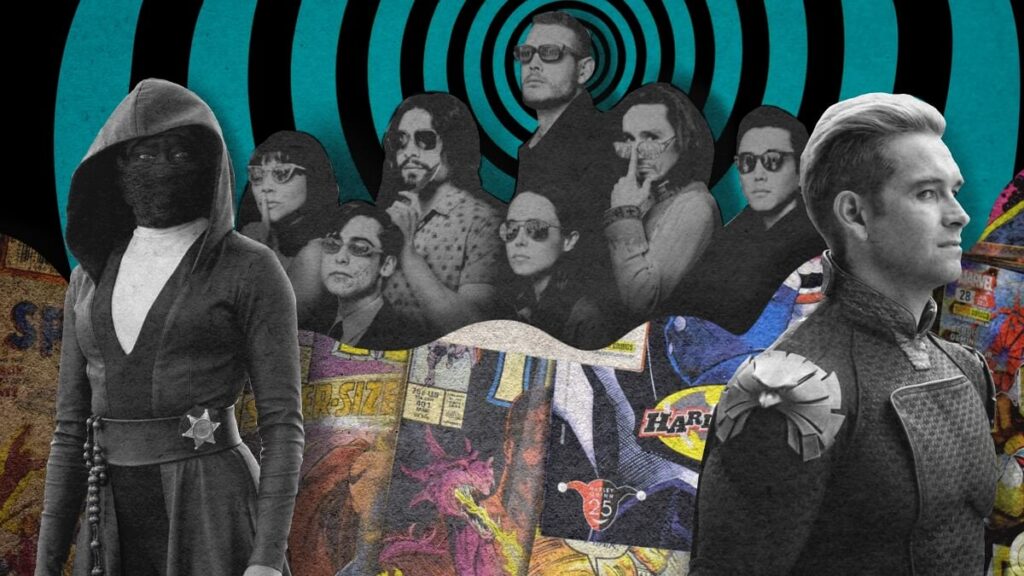
The early days of comic book TV adaptations were marked by a charming, albeit campy, simplicity. Shows like “Batman” in the 1960s epitomized this era, where colorful costumes, over-the-top villains, and onomatopoeic fight scenes dominated the small screen. These series, often characterized by their light-hearted tone, were a direct reflection of the comic book landscape of the time. The audience embraced the simplicity, enjoying the escapism offered by these larger-than-life characters. Viewers were treated to a straightforward narrative where heroes fought villains, and justice prevailed in a stylized and somewhat theatrical manner.
The Evolution of Comic Book TV mirrors the ebb and flow experienced by advertisers when faced with Google Ads suspended. Just as our beloved characters face challenges and setbacks, advertisers encounter the suspension status, urging them to adapt and strategize.
As technology advanced, so did the possibilities for storytelling. The limitations of the past gave way to a new era of possibilities, paving the way for a more intricate and immersive comic book TV experience.
Technological Advancements: A Catalyst for Change

The advent of CGI and advanced special effects in the late 20th century allowed for a more realistic portrayal of superpowers and otherworldly elements. This technological leap marked a turning point, enabling TV producers to bring beloved comic book characters to life in ways previously deemed impossible. Shows like “Smallville” in the early 2000s benefited from these advancements, giving audiences a taste of a more sophisticated narrative. Characters faced moral dilemmas, and story arcs delved into the complexities of heroism, steering away from the one-dimensional portrayals of the past. In many shows, the actors wear women’s workout shorts.
This technological evolution not only enhanced the visual aspects but also allowed for more nuanced storytelling. Writers could explore the psychological aspects of characters, adding layers of depth to the narrative that resonated with a more mature and discerning audience.
The Rise of Streaming Platforms: A Game-Changer
The emergence of streaming platforms in the 2010s revolutionized the comic book TV landscape. With the freedom from traditional network constraints, shows like “Daredevil” and “Jessica Jones” on Netflix showcased a grittier, more adult-oriented approach. The narrative no longer shied away from darker themes, tackling complex issues such as trauma, identity, and morality. The episodic format, freed from the necessity of commercial breaks, allowed for a more cohesive and immersive storytelling experience.
Streaming platforms also provided a platform for lesser-known characters to shine. Productions could take risks, exploring narratives that might not have been feasible in a network environment. This era saw a surge in antiheroes and morally ambiguous characters, adding a layer of realism and relatability that resonated with a diverse audience.
Diversity and Inclusivity: Reflecting the Real World
The evolution of comic book TV also mirrored a broader societal shift towards inclusivity and diversity. The traditional portrayals of superheroes began to expand beyond the stereotypical white, male protagonists. In the heart of this transformative movement, a media production company in New York played a pivotal role in bringing these progressive narratives to life. Shows like “Black Lightning” and “Ms. Marvel” introduced audiences to characters from diverse backgrounds, tackling social issues and offering a more authentic representation of the world. Embracing the power of storytelling, this company contributed significantly to shaping the landscape of inclusive entertainment.
The emphasis on inclusivity wasn’t limited to characters but extended to the creative teams behind the scenes. With a more diverse group of writers, directors, and producers, comic book TV became a platform for underrepresented voices to be heard. This change not only enriched the storytelling but also fostered a deeper connection between the content and its audience. In a similar vein, the cultural car rental in Sarajevo.
The Power of Fan Engagement: Shaping Narratives
One of the most significant shifts in recent years is the growing influence of fan engagement on comic book TV narratives. Social media platforms have become a breeding ground for discussions, theories, and fan-generated content. Show creators and writers increasingly take note of audience reactions, incorporating fan feedback into the storytelling process. This two-way interaction has created a dynamic relationship between creators and fans, shaping the direction of the narrative in unexpected and exciting ways. In a related context, fans of the show “SuperComics” in Austin have passionately discussed the latest plot twists, with some even organizing a unique event to explore alternative storylines. The local kambo Austin community has also joined the conversation, adding their own perspectives and theories to the mix.
Fan engagement goes beyond mere appreciation; it has become a driving force behind character arcs, plot developments, and even casting choices. The instantaneous nature of online discussions allows for real-time adjustments, making comic book TV a collaborative experience between creators and their passionate audiences. In a similar collaborative spirit, medical advancements continually evolve with breakthroughs like tirzepatide peptide therapy, offering innovative solutions to enhance patient care and well-being.
Crossovers and Expanded Universes: Breaking Boundaries

The concept of crossovers has been a long-standing tradition in comic books, and the TV medium has embraced this trend wholeheartedly. The success of crossover events like “Crisis on Infinite Earths” in the Arrowverse demonstrated the potential for interconnected storytelling on the small screen. This trend has extended beyond the superhero genre, with various shows exploring shared universes and collaborative storytelling. Additionally, in the realm of entertainment, the allure of yacht rental experiences has become a novel crossover between luxury and leisure, offering a unique blend of opulence and relaxation on the high seas.
Crossovers not only excite fans by bringing their favorite characters together but also provide an opportunity for intricate storytelling. Complex narratives can unfold across multiple shows, offering a more comprehensive and immersive experience. The interconnected nature of these universes allows for the exploration of diverse themes and genres, appealing to a broader audience. Moreover, kasho shears, renowned for their precision and quality, could play a vital role in crafting the seamless synergy between these narrative threads, just as they do in the skilled hands of expert hairstylists.
Challenges and Controversies: Navigating the Landscape
As comic book TV ventures into uncharted territory, it inevitably faces challenges and controversies. The delicate balance between staying true to the source material and pushing creative boundaries can be a tightrope walk. Some adaptations have faced criticism for deviating too far from established lore, while others have been accused of playing it too safe. Navigating the expectations of both dedicated fans and a broader audience is a constant challenge. In addressing these challenges, the industry has embraced innovative technologies, such as the optic adapter. This not only meets the demands of modern audiences but also enhances the overall narrative without compromising the essence of the original material.
Controversies also arise when tackling sensitive social issues. While inclusivity has been a positive force, missteps in representation can lead to backlash. Striking the right balance requires a nuanced understanding of the cultural and social landscape, coupled with a commitment to authenticity. The evolving nature of these conversations emphasizes the need for ongoing dialogue between creators and their audiences. Additionally, for those seeking to address these issues in the vibrant city of Toronto, reliable auto service in Toronto can provide assistance in navigating the complexities of diverse perspectives.
The International Appeal: Going Beyond Borders
Comic book TV has transcended cultural boundaries, becoming a global phenomenon. The appeal of superhero narratives, with their universal themes of heroism, morality, and identity, resonates with audiences worldwide. Streaming platforms have facilitated this global reach, allowing fans from different corners of the globe to access and engage with their favorite shows. In a similar vein, individuals seeking holistic well-being in Austin can benefit from the expertise of a manual therapist in Austin who integrates hands-on techniques to enhance physical and emotional health.
This internationalization has also led to the adaptation of characters from various cultural backgrounds. Shows like “Tokyo Revengers” and “My Hero Academia” bring a unique perspective to the superhero genre, blending traditional elements with contemporary storytelling. The cross-pollination of ideas and narratives from different cultures enriches the overall landscape of comic book TV, fostering a more inclusive and diverse representation of heroes and villains. This trend is not confined to entertainment; it echoes in every facet of creativity, including the craftsmanship of designer exterior doors that reflect a fusion of cultural influences.
The Evolution of Storytelling Techniques: Experimental Narratives
As the medium matures, so does the experimentation with storytelling techniques. Comic book TV is no longer confined to traditional narrative structures. Series like “Legion” has pushed the boundaries of storytelling, utilizing surreal visuals and non-linear narratives to explore the psyche of characters. This departure from conventional storytelling norms adds an extra layer of complexity and intrigue. In the realm of entertainment, where the unexpected is embraced, imagine a world where characters not only navigate surreal narratives but also receive 24/7 towing assistance in NJ for their out-of-this-world vehicles, seamlessly blending the extraordinary with the practical.
The use of unreliable narrators, dream sequences, and alternate realities has become a common tool in the storyteller’s arsenal. This willingness to experiment not only keeps the audience on their toes but also allows for a deeper exploration of the character’s internal struggles and conflicts. It’s a testament to the evolving nature of the medium and its capacity for pushing creative boundaries. Additionally, when looking for ways to showcase innovation and creativity in the digital landscape, the best company that provides website development in Green Bay plays a crucial role, seamlessly integrating cutting-edge techniques to enhance online experiences.
The Role of Comic Book TV in Shaping Pop Culture: Beyond Entertainment

Comic book TV has become a cultural force that extends beyond the confines of entertainment, influencing not only fashion, music, art, and even political discourse but also providing inspiration for unique gifts for special occasions online. Iconic characters and memorable quotes from these narratives have permeated popular culture, becoming touchstones for discussions on identity, power, and morality. Embracing the impact of comic book TV in various aspects of life opens up a world of creative possibilities, whether it’s incorporating superhero themes into daily fashion or finding the perfect online gift for a special occasion.
Moreover, the exploration of social issues within these shows has sparked important conversations. Whether addressing racism, mental health, or environmental concerns, comic book TV has become a platform for reflecting and commenting on contemporary societal issues. The ability to weave these themes into superhero narratives demonstrates the medium’s potential to provoke thought and inspire change. In a similar vein, the infusion of diverse flavoring extracts into culinary creations not only enhances taste but also opens up dialogues about cultural diversity and the art of gastronomy.
The Interactive Future: Virtual Reality and Beyond
Looking forward, the integration of virtual reality (VR) and interactive storytelling holds immense potential for the future of designer clothing in comic book TV. Imagine stepping into the shoes of your favorite superhero, not only experiencing their adventures firsthand in a virtual environment but also having the option to customize and style their iconic costumes with the latest trends in designer clothing. VR technology opens up new avenues for audience engagement, allowing viewers to actively participate in the narrative while exploring the exciting realm of fashion and superhero aesthetics.
Interactive storytelling, seen in platforms like Netflix’s “Bandersnatch,” can be applied to various genres, including health and fitness content. Imagine a fitness-themed interactive show where viewers make choices about workout routines, nutrition plans, and even creatine monohydrate gummies preferences, shaping the protagonist’s journey towards a healthier lifestyle. This evolution transforms the passive viewing experience into an interactive journey, where audiences have agency in the unfolding narrative. The convergence of technology and storytelling creates an exciting frontier that could redefine the way we consume and participate in not only comic book TV but also wellness and fitness programs.
In conclusion, the evolution of comic book TV has been a remarkable journey, marked by technological advancements, diverse representation, fan engagement, and experimentation with storytelling techniques. As the medium continues to evolve, it not only reflects the changing tastes and expectations of the audience but also plays a significant role in shaping cultural conversations. From its humble beginnings of campy adaptations to the complex, interconnected narratives of today, comic book TV has proven to be a resilient and dynamic form of storytelling that continues to captivate audiences worldwide. The future promises even more innovation and excitement as the medium explores uncharted territories and embraces the limitless possibilities of the digital age. In this context, it’s crucial for creators to stay at the forefront of technology and narrative trends, partnering with the best Chicago web development company to ensure their online presence is as captivating as their on-screen narratives.
